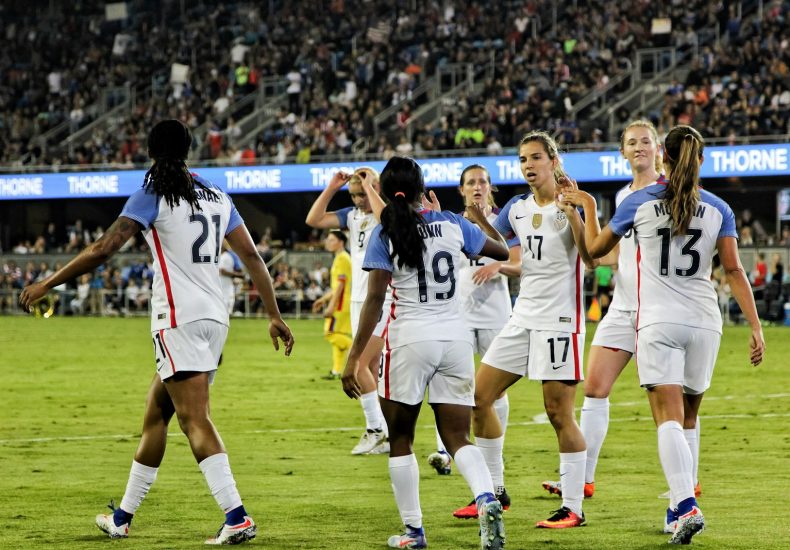
The Rise of Women’s Football: A Global Movement
Over the past decade, women’s football has transformed from a niche pastime into a worldwide phenomenon that captivates millions of fans, attracts multi‑million‑dollar sponsorship deals, and reshapes the cultural landscape of sport. From packed stadiums in Europe to grassroots pitches in Africa, the rise of women’s football is not just a trend—it’s a movement powered by talent, investment, and a growing appetite for inclusive competition. This article dives deep into the history, current statistics, and future outlook of women’s soccer, offering readers a comprehensive view of why the sport is soaring and how you can be part of its momentum.
From Grassroots to Global Stage: A Brief History
The roots of women’s football trace back to the early 20th century, when informal matches were played in factories and schools despite societal resistance. The first recorded women’s match in England took place in 1881, but it wasn’t until the 1970s that national federations began to officially recognize the game. Key milestones include:
- 1971: The inaugural Women’s World Cup (unofficial) in Mexico, drawing over 100,000 spectators.
- 1991: FIFA launches the official Women’s World Cup in China, setting the stage for global exposure.
- 1999: The U.S. Women’s National Team wins the World Cup on home soil, sparking a surge in TV ratings and sponsorship interest.
- 2015 & 2019: Record-breaking viewership for the Women’s World Cup, with over 1 billion cumulative viewers in 2019.
These historic moments laid the foundation for the modern era, where professional leagues now exist on every continent and female athletes command the same media attention once reserved for their male counterparts.
Key Drivers Behind the Rapid Growth
1. Increased Investment and Sponsorship
Major brands such as Nike, Adidas, and Visa have poured billions into women’s football, recognizing its untapped market potential. In 2023, global sponsorship revenue for women’s football exceeded $1.2 billion—a 45 % increase from 2020. This influx funds better training facilities, higher player salaries, and expansive marketing campaigns that reach new audiences.
2. Media Coverage and Streaming Platforms
Traditional broadcasters and digital platforms alike have amplified the sport’s visibility. The partnership between FIFA and streaming giants like Amazon Prime and Disney+ ensures that every Women’s World Cup match is accessible worldwide, driving fan engagement and generating valuable data for advertisers.
3. Grassroots Development Programs
National federations are investing in youth academies, school programs, and community leagues. FIFA’s “Women’s Football Development Programme” has allocated over $200 million to 100+ nations, focusing on coaching education, infrastructure, and talent identification.
Current Landscape: Statistics That Tell the Story
- Viewership: The 2023 Women’s World Cup averaged 32 million viewers per match, surpassing the 2019 tournament by 20 %.
- Attendance: Stadiums across Europe reported an average attendance of 15,000 for women’s league matches—up from 9,000 in 2018.
- Player Salaries: Top-tier players now earn six‑figure contracts; the USWNT’s collective bargaining agreement secured a minimum salary of $500,000 per year.
- Social Media Reach: The hashtag #WomensFootball trended in 28 countries during the 2023 World Cup, generating over 1 billion impressions.
These numbers illustrate a clear trajectory: women’s football is not only gaining fans but also becoming a lucrative commercial property.
Regional Highlights: How Different Continents Are Shaping the Movement
Europe
Europe leads the professionalization wave with leagues like the English Women’s Super League (WSL), France’s Division 1 Féminine, and Spain’s Primera División. Clubs such as Manchester City, Olympique Lyonnais, and Barcelona have invested heavily in women’s squads, resulting in higher competitive standards and cross‑border tournaments like the UEFA Women’s Champions League.
North America
The United States and Canada continue to dominate on the international stage, while the National Women’s Soccer League (NWSL) in the U.S. expands its footprint with new franchises in San Diego and Utah. The league’s recent TV deal with CBS Sports and Twitch guarantees over 500 million households exposure.
Asia & Oceania
Japan’s Nadeshiko League and Australia’s A-League Women have seen record attendances, driven by successful World Cup performances and government support. In 2024, the Asian Football Confederation announced a $150 million fund to develop women’s football infrastructure across the region.
Africa & South America
While still emerging, Africa’s CAF Women’s Champions League and South America’s Copa Libertadores Femenina are gaining traction. Nations like Nigeria, Brazil, and Colombia are producing world‑class talent that now competes in top European clubs.
Challenges Still Ahead
Despite impressive growth, several obstacles remain:
- Pay Equity: A significant wage gap persists between male and female players, especially in lower‑tier leagues.
- Infrastructure Gaps: Many developing nations lack quality pitches and training facilities, limiting talent development.
- Media Representation: Women’s matches still receive fewer broadcast hours compared to men’s games, affecting sponsorship opportunities.
- Cultural Barriers: In some regions, societal attitudes continue to discourage girls from pursuing football.
Addressing these issues requires coordinated action from federations, sponsors, and fans alike.
Future Outlook: What’s Next for Women’s Football?
Looking ahead, the next decade promises even greater expansion:
- 2027 Women’s World Cup Expansion: FIFA plans to increase participating teams from 32 to 48, opening doors for emerging nations.
- Club Competition Integration: Discussions are underway to align women’s club calendars with men’s leagues, facilitating shared stadium usage and marketing.
- Technology Adoption: AI‑driven analytics and VR training tools are being introduced to enhance player performance and fan interaction.
- Grassroots Empowerment: New scholarship programs aim to bring 1 million girls into organized football by 2030.
These initiatives will not only boost the sport’s commercial value but also reinforce its role as a catalyst for gender equality and social change.
Ready to join the movement? Subscribe to our newsletter for the latest women’s football news, exclusive interviews, and ways you can support the game locally and globally.



